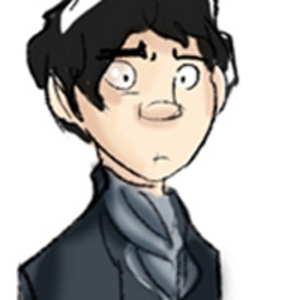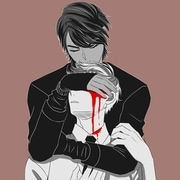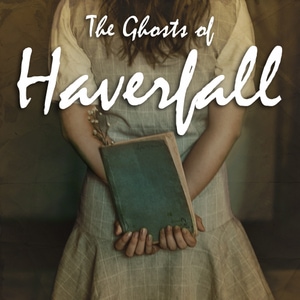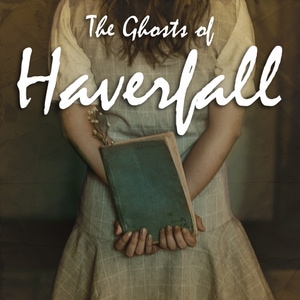Haverfall by-the-Sea: an Exposé Purposed for the London Herald
Monday, 28 July, 1930
Breaking News: MURDER at HAVERFALL - a PLOT UNCOVERED
From the very first I suspected something was amiss.
Why else should the cause of death have been so unclear, the illness so sudden? From my first arrival at Haverfall by-the-Sea, readers may be assured that I made it my business to conduct a thorough investigation of the grounds, as per the request of my employers. Though the house is not overly large, it has its share of winding corridors and dim corners, so I found myself with much to explore. What can I tell you of the cabinets full of foreign oddities, the rooms hung with sun-stained maps, the gloomy rows of portraits? It was during these adventures through the dark and dust that I began to gather I was not alone in my investigations. The creak of a staircase here, a shuffling footstep there; another crept about the place.
Haverfall-by-the-Sea finds herself possessed of a groundskeeper who spends oddly little time tending to its grounds. I could not account for why Mr. Walter was so often found about the house and near the family, as the fellow seems to be generally disliked. Not, at least, until the day when I stumbled across the man outside the parlor. He had his ear pressed flat against the door, straining to hear the conversation beyond it, and I knew at last the identity of my lurking companion. He gave a start upon finding himself discovered, then a slow grin, and sidled off without a word.
What could he have been listening for? Did he also suspect something? When I asked directly what he was about, the man only became vague and muttered something about repairing hinges. What did he wish to know? What did he already know?
I took it upon myself to inspect Mr. Walter’s little cottage as soon as the opportunity presented. The roof leaked and the place smelled of rotting wood; there was little more inside than a mess of gardening tools, a rusted kettle, and discarded clothing draped over the few pieces of furniture. The only item of interest I discovered was a strange letter the fellow had written himself on a scrap of newspaper. The figures and notes at the bottom I still cannot make out (his odd spellings and near illegible handwriting do nothing to help) but the first line caught my notice:
“Erbody wuz her night W snuft it. The flour iz gon. Who?”
I can only suppose W to stand for the late William Rathod, as he is the only one who has "snuffed it" around these parts. However I could not think why a groundskeeper should care about flour as this is strictly the cook’s business, nor what it could have to do with Lord Rathod's death. It seemed merely nonsense, when all at once I recalled Lisbeth the cook having mentioned the baron’s complaints towards her meals during the week of his illness. (This was dismissed by the others as a symptom of his delirium, for by all accounts the food was fine as ever.) But perhaps the taste of Lord Rathod’s food had altered? It was with a cold jolt that the idea of poison first ran through my mind. Could someone have been tampering with his food? It occurred to me that flour seemed a fine hiding spot for that other white powder; cyanide (inheritance-powder, as it was once called).
Here my plans were frustrated. Upon searching the kitchen pantry I could find no evidence that the flour had been tampered with, nor that it was missing in any quantity. An investigation of the cupboards and closets revealed that neither cyanide nor poison of any sort seems to be kept in the house for pest control. Of course someone might have sneaked their own supply of some deadly substance into the house, but how could that be proved?
It was while wandering near the wall which overlooks the cliffs to clear my head that I found it. An odd thing sits atop the sea-swept hills of Havorford, where the gardens go untended and the hedges grow in tangles. In the crook of a wall amid the old blanched ruins of the fort; a single shrub sheltered from the wind, strange and vibrant in this place without green, and most marvelous of all, the few violet blossoms sparkling from its depths. The plant appears to have been tended to, for I could see its branches were recently pruned; indeed the whole of the corner seems well-kept. Vines creep up the wall behind it in lovely trickling swirls, the sandy earth at its base is well-tilled. And crowning it all, those purple petals, bright and secret. I had seen them before.
It was not until later that afternoon that I recalled where. A large vase of the same purple blossoms has been adorning the dining room since my arrival. The things were still there, looking rather drooped and worse for wear, but I recall thinking how lovely they were when I first saw them. And I am amazed that I did not think of them then, and at how long it all took me – how foolish I was to trust the spelling of a nearly illiterate groundskeeper. Flower, not flour.
Haverfall boasts a marvelous little library, with cushioned sofas and hidden corners aplenty, proud windows overlooking the sea, and books on every subject one could hope for. It was here I located a dusty tome on horticulture, and more importantly, the identity of a curious purple flower: Belladonna, called Deadly Nightshade - as famous for its beauty as for its poison.
Yours Faithfully,
Jonathan Northwind











Comments (0)
See all